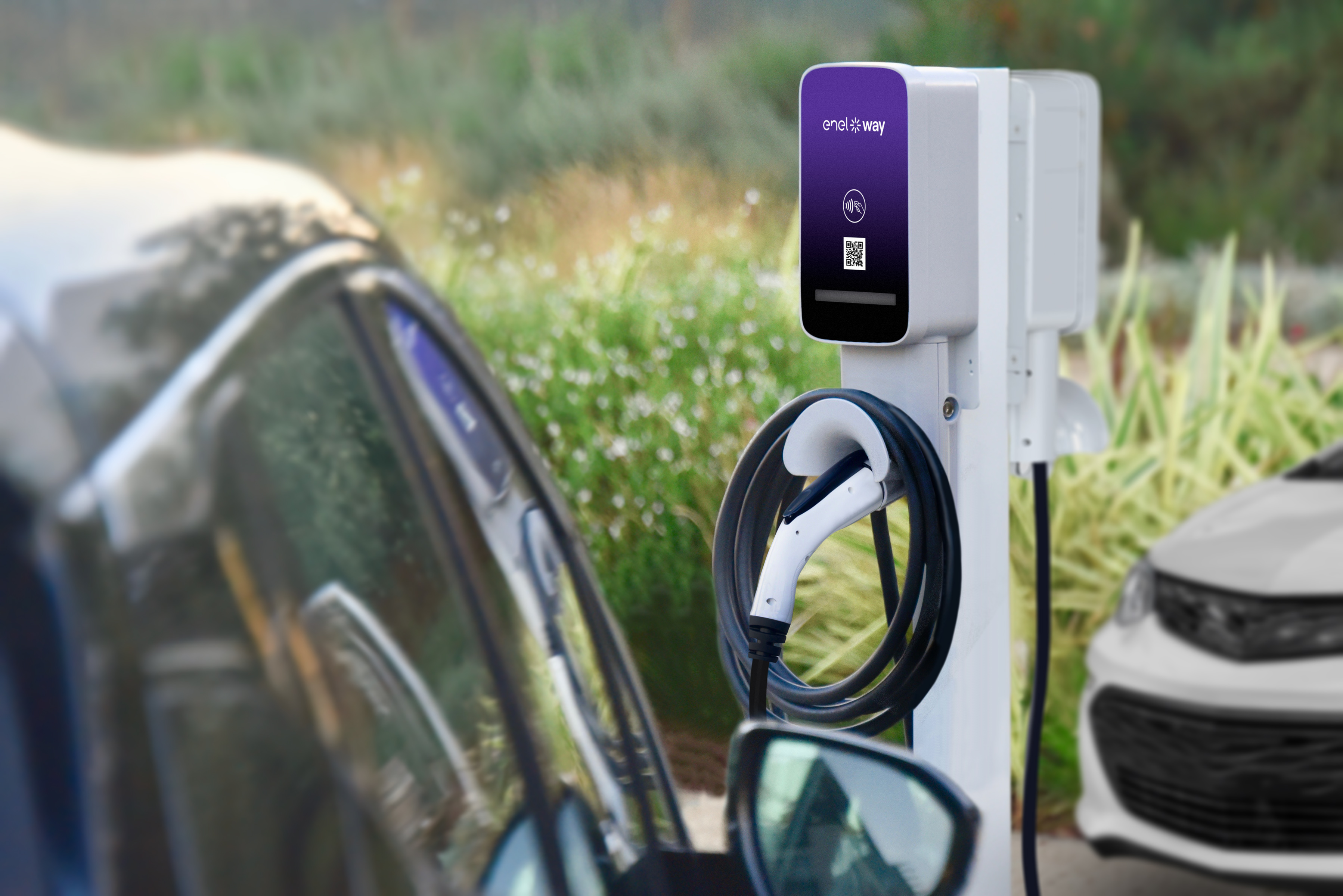Sustainable urban planning has a powerful new tool: Electric vehicles

The vision of urban sustainability is to build dense city environments with abundant green spaces, walking paths, and bicycle routes. While reducing vehicle traffic is critical, advances in renewable energy and transportation technologies—such as zero-emission electric vehicles, micro-mobility, and microgrids—give green urban planners new tools to consider in their environmental sustainability planning process. Integrating commercial electric vehicle charging stations into a sustainable city design has become an essential consideration for urban planners.
With silent engines and no tailpipes clouding the street with CO2, suddenly cities are a boon for peaceful living and clean air. On one hand, the more EVs on the road with long-range batteries, the more sustainable urban planning is. However, traditional green guidelines strive to have home, work, and shopping located within a short distance of one another for walkability, which is the green city dream.
Moreover, green urban planners typically favor buses and commuter trains, which use 10 to 25 percent less energy per mile than a standard personal vehicle. The fault in this comparison is that it’s using internal-combustion vehicles and doesn’t consider the dramatic energy efficiency gains from EVs.According to the Union of Concerned Scientists, driving the average EV produces global warming pollution equal to an internal-combustion vehicle that gets 88 miles per gallon fuel economy. That makes electric cars three to four times less polluting than today’s average gas-powered vehicle.
Integrating EVs into sustainable urban planning
Savvy urban planners and developers realize that shifting to EVs can become a core element in creating green communities. An excellent example is the Community Mobility Hub, launched in Austin, Texas in 2018. Worsening traffic congestion has become a growing concern for Austin residents so the Rocky Mountain Institute deployed the Community Mobility Hub pilot program, which maintains green urban principals like walkability, bike-friendliness, and proximity to housing and businesses.
In addition, the program included new forms of mobility, such as carsharing parking spots, a charging hub for shared electric bikes and scooters, and discounted ridesharing. These mobility hubs also feature shade from nearby trees, gardens, and local food trucks.
With or without green urban developments, city planners are still ensuring drivers have access to public and workplace charging stations. The California Air Resources Board has budgeted more than $1 billion in electric vehicle initiatives, with a large share going to building charging stations. The poster child for endless highways and car culture in Los Angeles. The current mayor of LA, Eric Garcetti, realizes that major shifts to the built environment will take time. His Green New Deal for the city calls for 80% of vehicles sold in Los Angeles to be electric by 2028.
By that time, nearly one-third of the cars on the road would be zero-emissions. The city’s bus fleet will go all-electric by 2030. The city’s garbage trucks will be all-electric five years later. The city recently bought its first electric fire engine, with more to come. The city also has plans to require all Ubers and Lyfts in Los Angeles to be electric.
EV charging is becoming a must-have amentity for businesses of all kinds. Are you ready?
Green cities and sustainable planning are key to widespread EV adoption and by including EV charging stations they’re enabling a one-two punch for sustainability - green cities for green drivers. The City of Angels will have more than 100,000 EVs running on its streets by 2025. Planners are increasing the number of charging stations to serve those drivers. For example, in late 2019, hundreds of EV charging outlets were installed on streetlight poles.
Gas stations are out, charging stations are in
As urban dwellers rely on electric vehicles of all forms—from e-scooters and electric cars to battery-powered buses and delivery vehicles— they must also consider the source of the electricity. In the electric age, transportation fuel becomes obsolete.
In order to help build a smart and sustainable infrastructure, green urban planners are carefully mapping where commercial EV charging stations will be located but they also have to consider the energy efficiency of nearby buildings. Here is where Community Microgrids come in to play. This approach for designing and operating the electric grid with local renewables (such as solar), is seen as a greener and more resilient way to power buildings. The same technologies can now be applied to power commercial charging stations.
Marcus Garvey Village, a 625-unit apartment complex in Brooklyn, NY, combines a 400-kW photovoltaic solar power system, 300-kW/1.2-MWh energy storage, and a 400-kW fuel cell developed by Enel X. It’s the first microgrid in New York City to ensure peak load reduction and autonomous backup power supply through self-generated power. In most Community Microgrids, the system’s software manages various energy resources to reduce peak load and demand charges. Akin to the IoT software used in a Community Microgrid, the JuiceBox smart charger can also optimize charging around grid conditions.
Now imagine microgrids, like the one in Brooklyn, sprouting up all over the United States. The energy produced via rooftop solar can be utilized to charge shared EVs offered to residents. Smart commercial charging stations can offer charging to EV drivers while participating in a reliable and resilient urban energy grid. The vision of a sustainable urban community has urbanites walk or bike where they need to go. The next step in sustainable urban planning comes when longer trips are required and people are able to jump into a fully charged electric car, grateful for knowing that it’s running on solar power produced in their own building.
Ready to make EV charging your competitive advantage?
Sign up for news and offers

